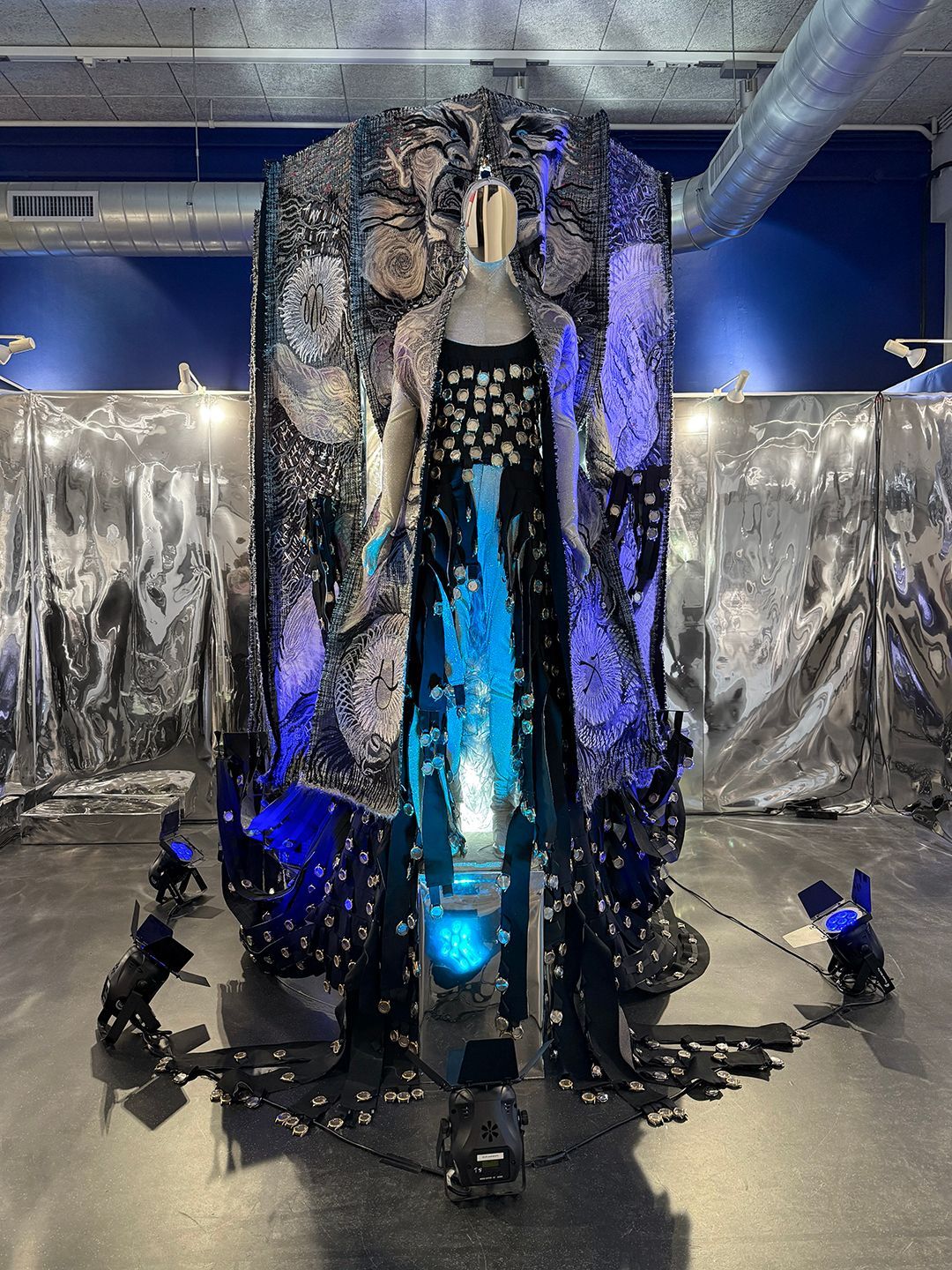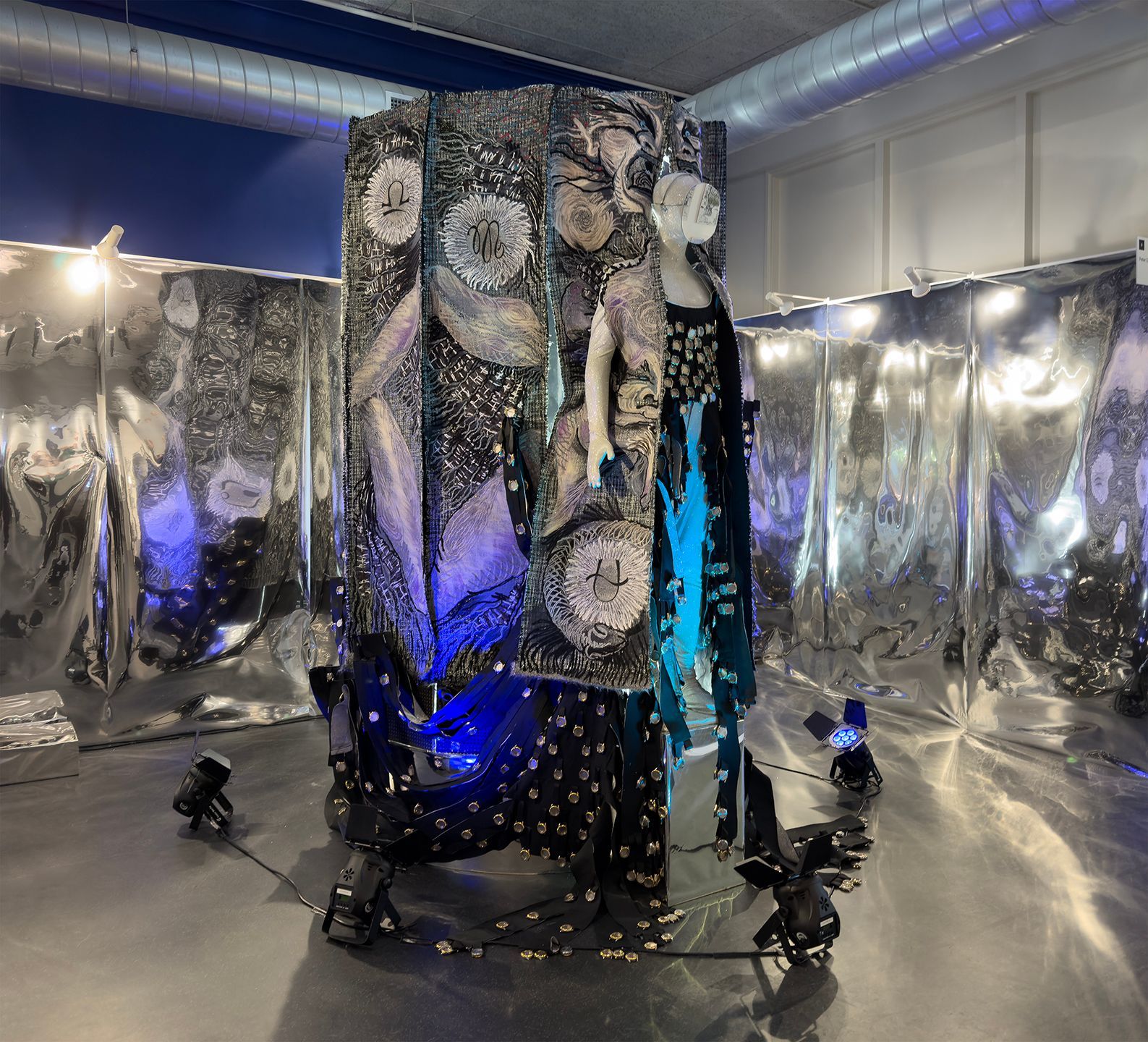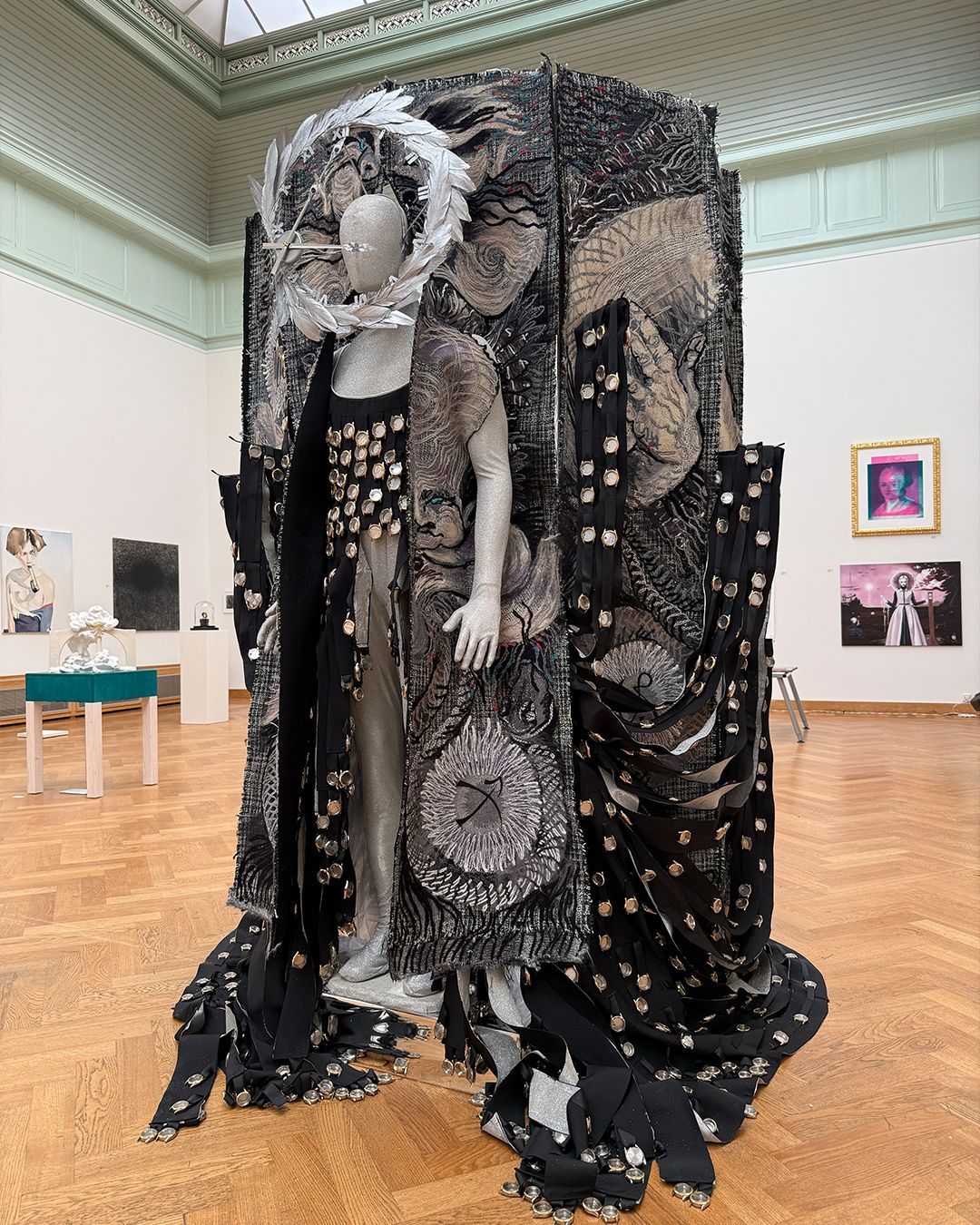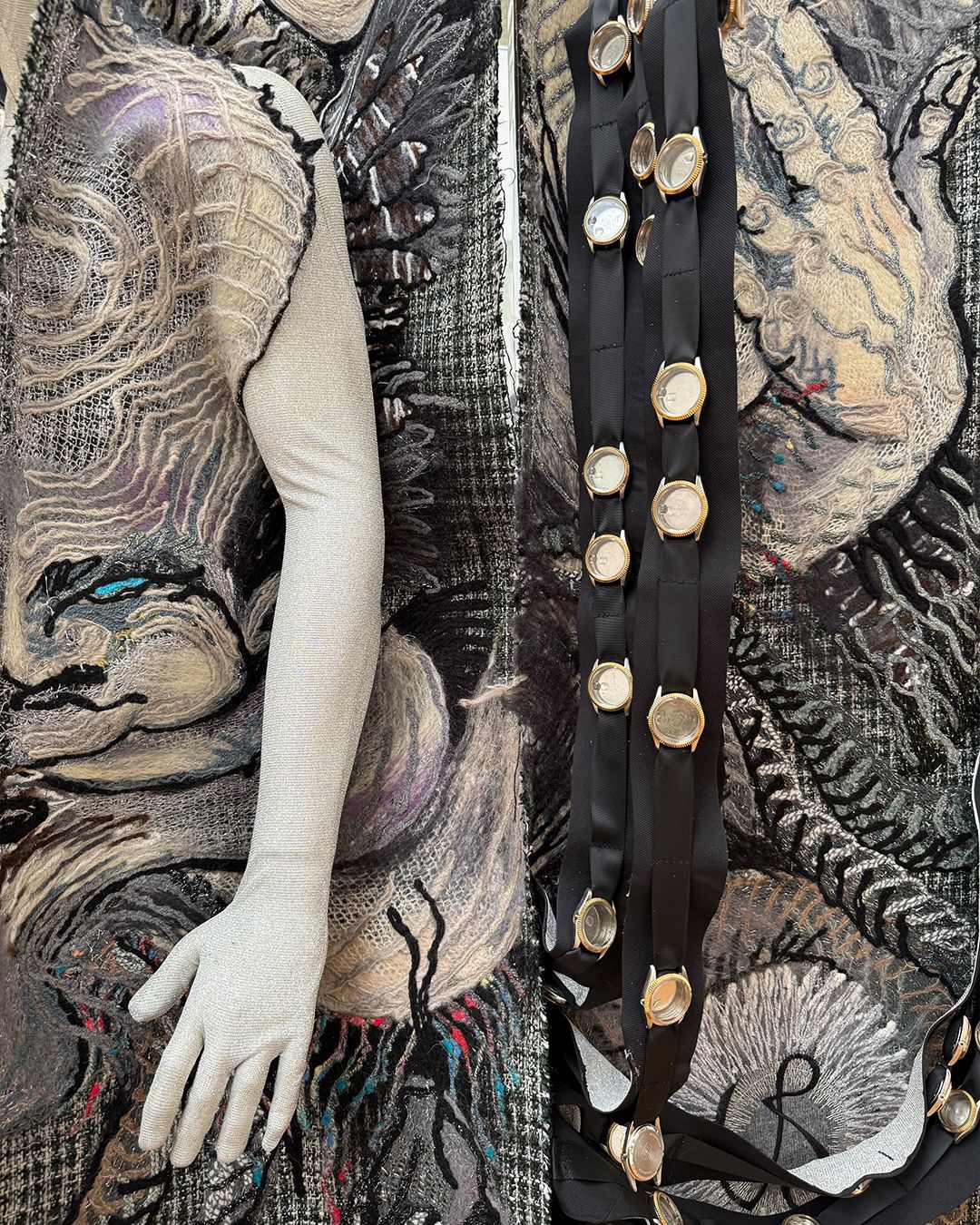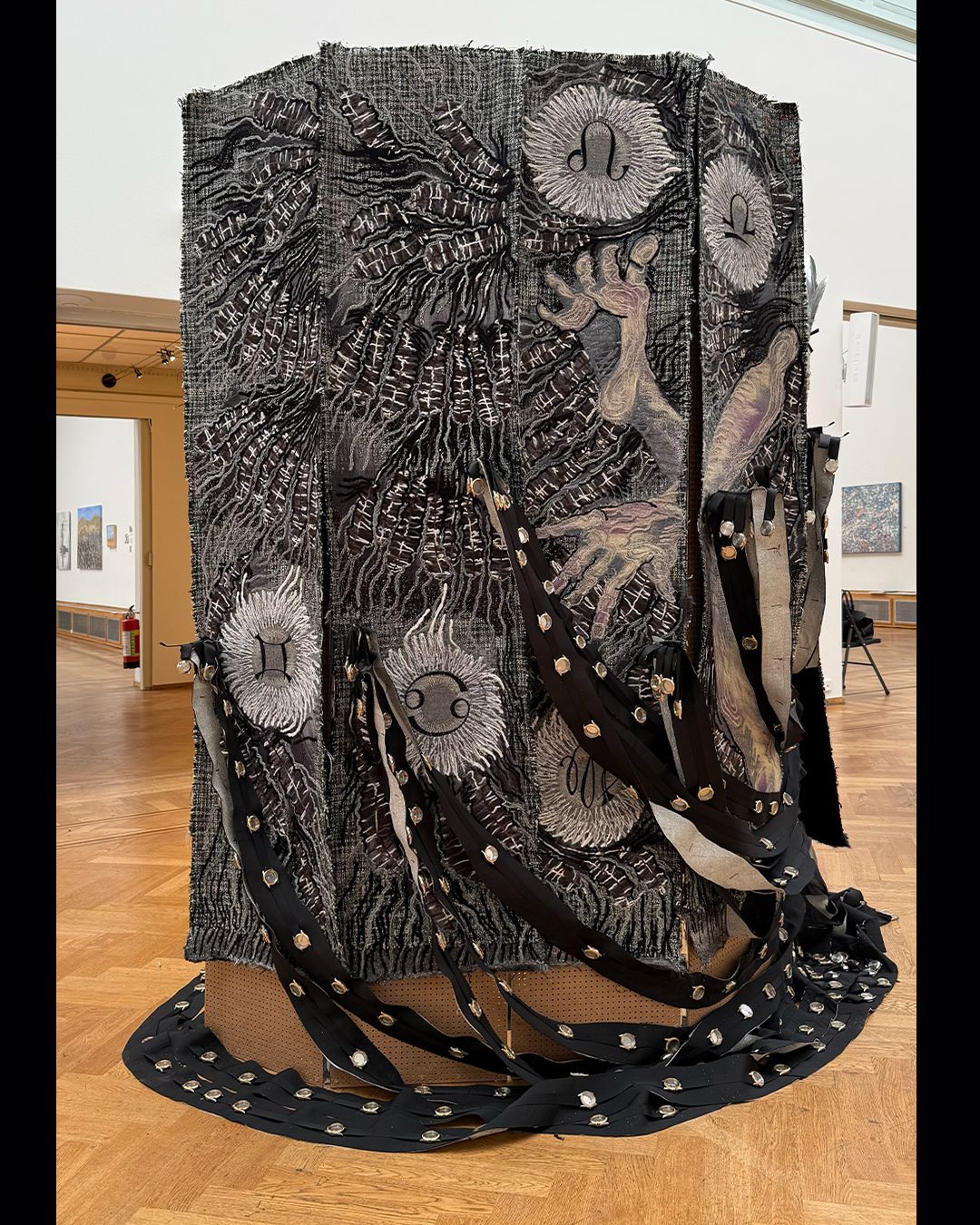textile installation
Locus Classicus
I Aion, Sartorial Statue, 2025
II Omne Vivum ex Vivo, 12-panel tapestry, 2025
III The Kozyrev Mirror, 2025
Locus Classicus is a three-part, circular textile installation on time: temporal fields at once participatory, reflective, linear and simultaneous. At its centre stands Aion, embodied as a wearable sculpture of cloth strips and empty timepieces. Viewers are invited to mark their own place in time by inserting medallions that commemorate the most recent birth and death within their lives. The installation is framed by a twelve-panel tapestry, where the masculine and feminine appear as storied dual forces of life and death, and is shaped by a Kozyrev Mirror, a device said to distort space and time. Together, Locus Classicus offers an altered view of time that echoes Thomas Carlyle’s words: “All nature and life are one living garment, woven and ever-a-weaving in the loom of time.”
I. Aion – The Sartorial Deity of Time
At the heart of the installation stands Aion, a Hellenistic deity representing unbounded time. A sartorial statue composed of long, linear strips of cloth overlaid with empty timepieces, symbols of temporal passage and absence. These strips and voided watch faces represent the crossing of life threads: the seen and the unseen, the living and the dead.
Visitors are invited to become part of this continuum by placing a medallion into one of the watch cases, inscribed with the name and dates of two individuals from their own lives: one most recently born, the other most recently deceased. In this gesture, time becomes tangible and personal.
The rear of the sculpture reveals the outline of a historical costume, interlacing the past with the future, invoking the role of a vestimentary manifestation as a marker of both cultural memory and forward passage.
II. Omne Vivum ex Vivo – The Tapestry of Continuity
Accompanying Aion is a large-scale, twelve-panel woven tapestry titled Omne Vivum ex Vivo – everything that is alive derives from something alive – a reference to the seventeenth-century biologist Francesco Redi. This tapestry presents an allegorical vision of the dual forces of masculine and feminine archetypes in their roles as life and death bearers. Through them, time is shown not merely as a measurement but as a continuum fuelled by consciousness that is sustained through an unbroken human lineage.
III. The Kozyrev Mirror – A Portal Beyond Linear Time
Together, these two elements – Aion and Omne Vivum ex Vivo – form a unified whole, shaped by the Kozyrev Mirror, a speculative theoretical device developed by Russian astrophysicist Nikolai Kozyrev. Said to alter time and space perception, the mirror serves here as both metaphor and form: a conceptual portal through which the viewer experiences time not as a sequence of events, but as a vast, interconnected field. Here, time is no longer a straight line but a loop, a spiral, a presence.
Viewed as a single installation, Locus Classicus invites viewers to contemplate an altered temporal field, where time is at once participatory, reflective, linear and simultaneous.
EXHIBITIONS

